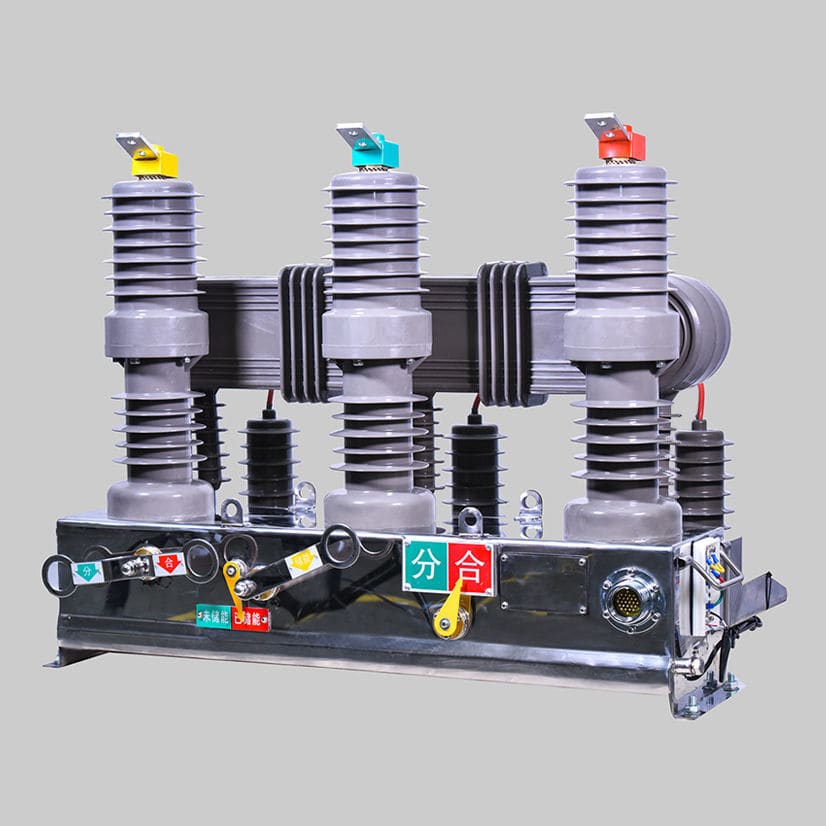Introduction to Vacuum Circuit Breaker
A vacuum circuit breaker is an essential component in modern electrical systems, designed to interrupt the flow of current during faults or overloads. It operates by extinguishing the arc within a vacuum, ensuring minimal contact erosion and longer service life. The Vacuum circuit breaker is preferred in medium-voltage applications for its high reliability, low maintenance, and safety features. Understanding the key parameters of a vacuum circuit breaker is crucial for ensuring its performance and longevity in industrial, commercial, and utility installations.
Importance of Monitoring Vacuum Circuit Breaker Parameters
The efficiency and safety of an electrical system heavily depend on the condition of the vacuum circuit breaker. Each vacuum circuit breaker has specific parameters that determine its operational capability. Engineers and technicians must monitor these parameters regularly to maintain optimal performance, prevent malfunctions, and extend equipment life. The key parameters include voltage rating, current rating, breaking capacity, insulation strength, and mechanical endurance.
Rated Voltage of a Vacuum Circuit Breaker
The rated voltage is one of the most fundamental parameters of a vacuum circuit breaker. It indicates the maximum system voltage that the breaker can handle safely. The vacuum circuit breaker must be selected according to the system voltage to ensure insulation coordination. Using a breaker with a lower rated voltage than the system voltage can lead to insulation failure and equipment damage. Typically, vacuum circuit breakers are available for medium voltage ranges such as 11kV, 22kV, and 33kV.
Rated Current of a Vacuum Circuit Breaker
The rated current of a vacuum circuit breaker defines the maximum continuous current it can carry without exceeding the permissible temperature rise. This parameter is essential for ensuring the vacuum circuit breaker can handle the load conditions of the system. Common rated current values include 630A, 1250A, 2000A, and 3150A. The correct selection of rated current ensures that the vacuum circuit breaker performs reliably under normal operating conditions.
Short Circuit Breaking Capacity
The short circuit breaking capacity is a crucial parameter that determines the ability of a vacuum circuit breaker to interrupt fault currents. When a fault occurs, the vacuum circuit breaker must isolate the circuit quickly to protect equipment and personnel. The breaking capacity is typically expressed in kiloamperes (kA) and represents the maximum fault current the breaker can safely interrupt. A vacuum circuit breaker with insufficient breaking capacity can fail catastrophically during high fault conditions.
Making Capacity of a Vacuum Circuit Breaker
The making capacity defines the highest current the vacuum circuit breaker can close onto under short-circuit conditions. It is usually higher than the breaking capacity, often 2.5 times greater. The vacuum circuit breaker must have adequate making capacity to withstand the initial surge of current when closing a circuit under fault conditions. Proper selection ensures safety and prevents mechanical damage.
Insulation Resistance and Dielectric Strength
Insulation performance is another vital parameter for a vacuum circuit breaker. Insulation resistance and dielectric strength ensure that the breaker can isolate live parts from earth and between poles. A high insulation resistance prevents leakage currents and electrical flashovers. During maintenance, it is essential to test the vacuum circuit breaker insulation regularly to confirm its integrity. Proper insulation helps maintain the reliability and safety of the electrical network.
Contact Resistance and Contact Wear
The contacts inside a vacuum circuit breaker play a significant role in current interruption. Low contact resistance ensures efficient current flow and minimizes power losses. Over time, the contacts of a vacuum circuit breaker may wear due to repeated operations. Monitoring contact wear and resistance is essential for maintaining performance. If contact wear exceeds the manufacturer’s limit, the vacuum circuit breaker should be serviced or replaced.
Mechanical and Electrical Endurance
The mechanical endurance of a vacuum circuit breaker refers to the number of operating cycles it can perform without significant wear. Electrical endurance relates to the number of interruptions the vacuum circuit breaker can handle under load or fault conditions. A high-quality vacuum circuit breaker typically offers thousands of mechanical operations, making it ideal for frequent switching applications. Regular testing helps ensure both endurance and reliability.
Operating Mechanism and Speed
The operating mechanism of a vacuum circuit breaker must function efficiently to ensure fast opening and closing actions. The speed of operation directly affects arc extinction and contact wear. A slow or sluggish mechanism can lead to excessive arcing, reducing the life of the vacuum circuit breaker. Therefore, checking the operating speed, spring charging system, and control circuit is vital for consistent performance.
Vacuum Integrity in the Interrupter
The vacuum interrupter is the heart of the vacuum circuit breaker. The vacuum level inside the interrupter determines the breaker’s arc-quenching capability. If the vacuum deteriorates, the vacuum circuit breaker may fail to interrupt the current properly. Regular testing of the vacuum level ensures that the interrupter maintains its integrity. A faulty vacuum interrupter should be replaced immediately to prevent operational hazards.
Temperature Rise and Thermal Stability
Excessive temperature rise within a vacuum circuit breaker can damage insulation and affect performance. The temperature rise parameter defines the maximum allowable increase under rated current conditions. The vacuum circuit breaker must have proper thermal stability to withstand overloads without compromising safety. Continuous monitoring of temperature helps in detecting abnormal heating and maintaining operational efficiency.
Conclusion
The vacuum circuit breaker is a critical component in ensuring the safe and efficient operation of electrical power systems. By carefully monitoring parameters such as rated voltage, current, breaking capacity, insulation strength, and vacuum integrity, engineers can ensure long-term reliability. Each vacuum circuit breaker from Aierway is designed with precision to meet international standards and withstand demanding industrial conditions. Regular maintenance and testing of these key parameters guarantee the best performance, making the vacuum circuit breaker an indispensable part of modern power networks.
